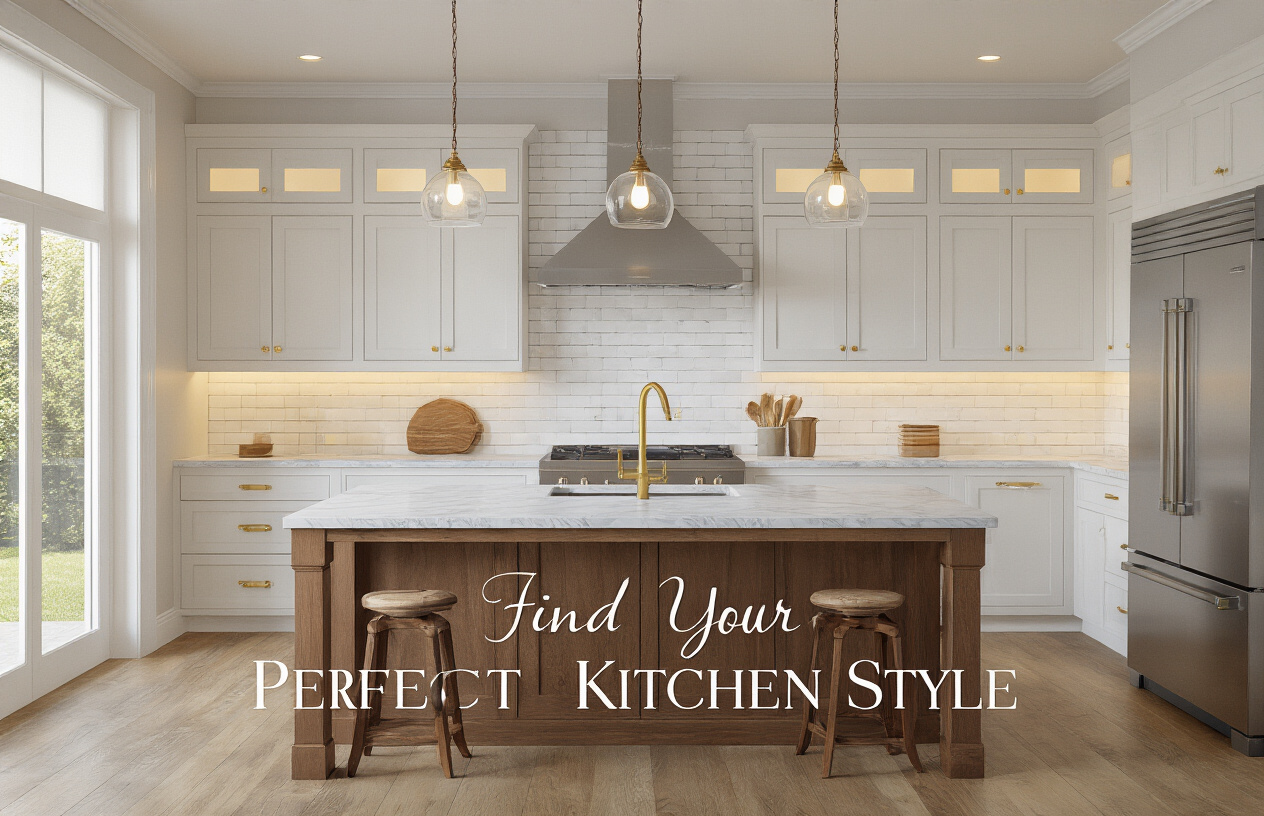Top Kitchen Remodeling Ideas: Which Style Suits Your Home Best?
Ever stood in your kitchen, coffee in hand, thinking, “I hate literally everything about this space”? You’re not alone. The average homeowner spends 37 minutes daily in a kitchen they don’t actually like.
But here’s the thing about kitchen remodeling – it’s not just about following trends. It’s about creating a space that works for your morning rush, weekend baking marathons, and impromptu wine nights with friends.
Whether you’re drawn to sleek modern minimalism or the warm embrace of farmhouse chic, finding the right kitchen remodeling style is like choosing the perfect outfit – it has to fit your lifestyle, not just look pretty on Pinterest.
Ready to discover which kitchen style is secretly perfect for your home (and might actually make you want to cook more)?
Assessing Your Home’s Kitchen Needs

Identifying Pain Points in Your Current Layout
You know that feeling when you’re trying to cook dinner, but someone’s always in your way? That’s a pain point. And your kitchen is probably full of them.
Take a good look at your kitchen. What bugs you? Maybe it’s the lack of counter space that forces you to prep veggies on your dining table. Or those dated cabinets that don’t close properly. Perhaps it’s the awful lighting that makes everything look unappetizing.
Common kitchen pain points include:
- Inadequate storage space
- Poor traffic flow
- Insufficient counter space
- Bad lighting
- Outdated appliances
- Awkward corners
Take a notepad and dedicate a week to documenting these frustrations. You’ll be surprised how many little annoyances you’ve just been living with.
Matching Kitchen Functions to Your Lifestyle
Your kitchen should work for you—not against you.
Are you a passionate home chef who needs pro-level equipment and miles of prep space? Or maybe you’re a busy parent who needs efficient zones for quick meal assembly and homework supervision?
Think about your actual routines:
- How many people cook at once?
- Do you entertain often?
- Where do people naturally gather?
- Do you need a dedicated work/study space?
- How much storage do you actually need?
The most effective kitchen designs represent your actual lifestyle rather than the way you believe you ought to live.
Setting a Realistic Budget for Your Vision
Money talk isn’t fun, but it’s necessary. Kitchen remodels can cost anywhere from $10,000 to $50,000+.
Break down your budget into categories:
| Category | Typical Percentage |
|---|---|
| Cabinets & Hardware | 30-35% |
| Installation | 20% |
| Appliances | 15-20% |
| Countertops | 10-15% |
| Flooring | 5-7% |
| Lighting | 5% |
| Miscellaneous | 5-10% |
Add a 15-20% buffer for unexpected issues—because trust me, they’ll pop up. Nothing’s worse than running out of money with a half-finished kitchen.
Be honest about what you can afford. Sometimes phasing your remodel makes more sense than compromising on important elements. You’ll thank yourself for sticking to a realistic budget when you’re enjoying your beautiful, functional new kitchen—without the financial stress.
Popular Kitchen Design Styles Trending Today
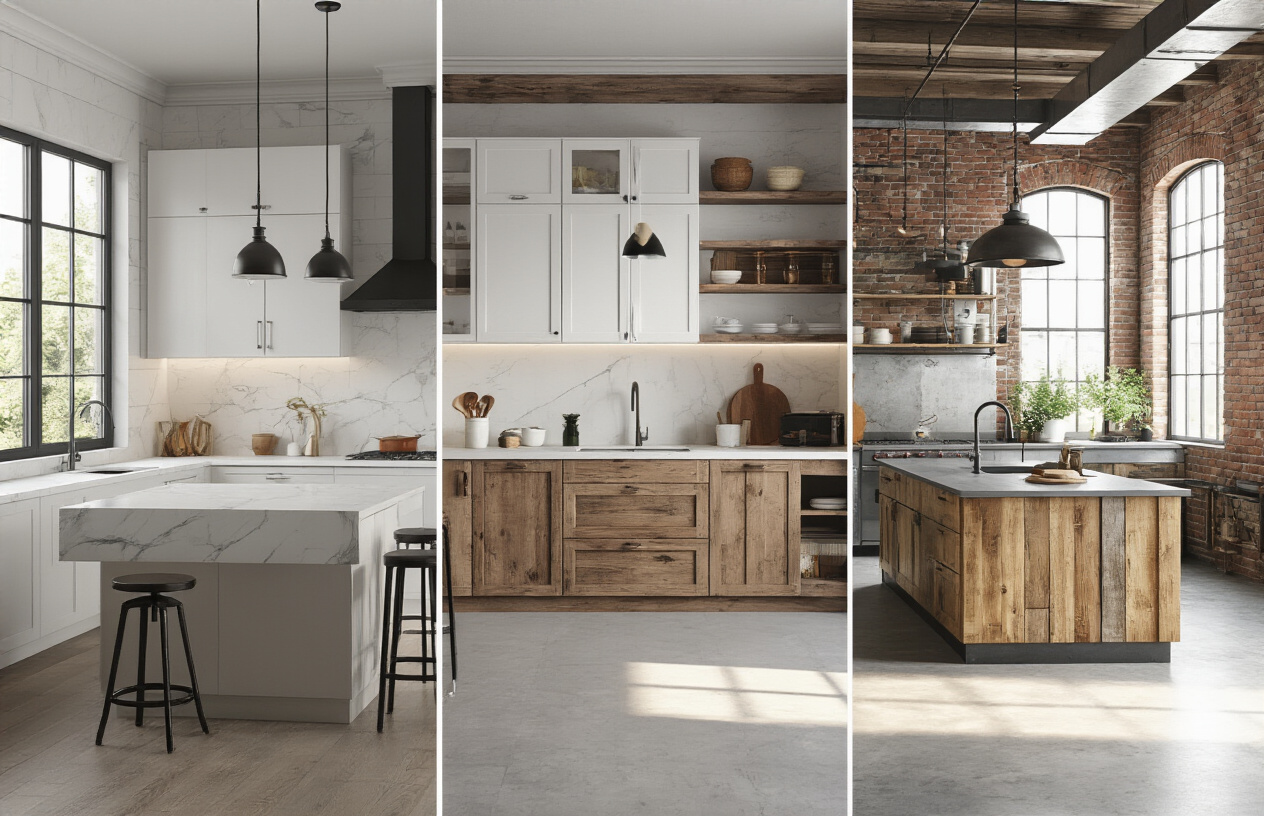
Modern Minimalist: Clean Lines and Smart Storage
Ever noticed how a clutter-free kitchen instantly feels more expensive? That’s the magic of modern minimalist design. It’s not just about looking fancy—it’s about creating breathing room in the heart of your home.
The key elements? Think sleek cabinets with hidden handles, monochromatic color schemes (typically whites, grays, or blacks), and countertops that run for miles without interruption.
Smart storage is the unsung hero here. Pull-out pantries, drawer dividers, and cabinet organizers keep everything in its place but out of sight. No more visual noise.
Lighting plays a huge role too. Recessed fixtures provide even illumination without dangling pendants breaking those clean sight lines you’re working so hard to create.
Farmhouse Charm: Rustic Elements with Practical Features
Farmhouse kitchens feel like a warm hug. They’re inviting without trying too hard.
The hallmarks include apron-front sinks (those gorgeous farmhouse sinks), open shelving displaying everyday dishes, and natural wood elements that aren’t afraid to show their grain or imperfections.
Colors tend toward warm whites, creams, and soft pastels, with pops of vintage-inspired accessories. Shiplap walls? Yes please. Exposed beams? Even better.
But modern farmhouse isn’t just about looking country-cute. Today’s versions incorporate practical features like pull-out waste bins, pot-fillers above the stove, and durable, family-friendly surfaces that can handle real life.
Industrial Chic: Raw Materials and Urban Aesthetics
Industrial kitchens aren’t trying to hide what makes them work. They’re celebrating it.
Exposed brick, concrete countertops, metal accents, and open ductwork create that converted-warehouse vibe that’s somehow both raw and sophisticated.
The color palette leans toward neutrals—grays, blacks, and browns—with materials doing the heavy lifting design-wise. ThConsider stainless steel appliances, pipe shelving, and Edison bulb lighting fixtures.
What makes industrial kitchens so appealing is their honesty. There’s no pretense, just functional beauty and materials that age gracefully with time.
Transitional Design: The Perfect Balance of Traditional and Contemporary
Can’t decide between classic and modern? You don’t have to.
Transitional kitchens combine the warmth of traditional design with the sleek appearance of modern styles.. They’re the “just right” porridge in the design world.
You’ll see Shaker-style cabinets painted in updated colors, classic subway tile with darker grout for edge, and marble or quartz countertops that reference history while staying firmly in the present.
Hardware tends to be simple but substantial—nothing too ornate or too minimalist. The overall effect feels timeless rather than trendy, which is exactly why transitional kitchens rarely look dated even years after installation.
Key Elements That Define Kitchen Styles
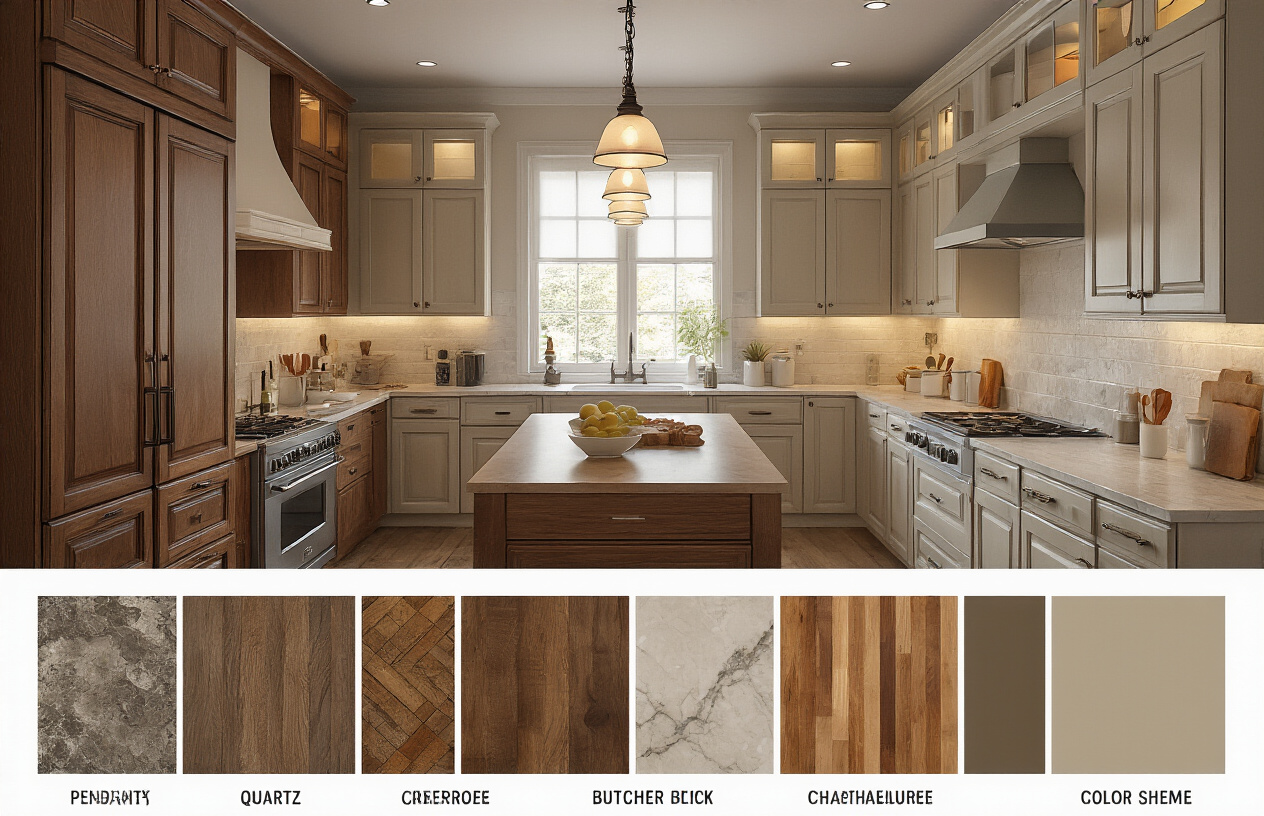
A. Cabinetry Options That Transform Spaces
The cabinets you pick can completely change your kitchen’s vibe in a heartbeat. Think of them as the backbone of your kitchen style.
Shaker cabinets? They’re the blue jeans of kitchens – classic, versatile, and they work with pretty much everything. Perfect if you’re after that timeless look.
Flat-panel cabinets scream modern. Clean lines, no fuss. They’re what you want when you’re going for that sleek, contemporary feel without the visual clutter.
Glass-front cabinets? Now we’re talking display opportunities. They open up the space and give you a chance to show off your fancy dishware. Just remember – everyone can see inside, so keep it tidy!
Color matters big time. White cabinets make spaces feel bigger and brighter. Deep-hued cabinets (consider espresso or black) introduce an element of drama and elegance. Or go bold with navy, green, or even two-toned cabinets for serious style points.
And don’t forget hardware – those knobs and pulls are like kitchen jewelry. Brass pulls on navy cabinets? Gorgeous. Matte black hardware on white? Striking contrast that never fails.
B. Countertop Materials and Their Impact on Aesthetics
Countertops aren’t just work surfaces – they’re major style statements.
Granite was the reigning champ for years, and for good reason. It’s durable, heat-resistant, and comes in countless natural patterns. Each slab tells a different story.
Quartz has stolen the spotlight recently. Why? It is virtually impervious – non-porous, resistant to stains, and exceptionally durable.Plus, the consistent patterns make designers happy.
Marble? Absolutely stunning with those dramatic veins. But be real – it’s high maintenance. Every tomato sauce splash is a potential heartbreak.
The butcher block adds a sense of warmth and character that stone simply cannot replicate. It’s like adding a hug to your kitchen design. Just oil it regularly.
Concrete counters are the industrial-chic option. They can be customized with pigments, embedded objects, or different finishes. Super cool, but not for the faint of heart.
The material you choose sets the tone: marble for luxury, concrete for edge, quartz for practicality with style.
C. Backsplash Designs That Make Statements
The backsplash is your kitchen’s chance to show some personality. It’s where you can take risks without committing to a whole room redesign.
Subway tiles are the classics that never quit. But who says they have to be boring white rectangles? Try them in emerald green or lay them in a herringbone pattern. Instant upgrade.
Mosaic tiles bring the drama. Tiny glass or marble pieces create a stunning effect that catches light and adds dimension. Perfect for creating a focal point behind your range.
Want something totally seamless? A slab backsplash using the same material as your countertops creates a sleek, high-end look that’s also super easy to clean. No grout lines means no scrubbing with a toothbrush!
Geometric patterns are having a major moment. Hexagons, arabesques, and Moroccan fish scales provide a level of visual intrigue that simple squares cannot achieve.
Don’t forget about height – taking your backsplash all the way to the ceiling behind open shelving or your range hood creates a dramatic, custom look that feels intentional and luxurious.
D. Flooring Choices for Durability and Style
Kitchen floors take a beating. They need to handle spills, dropped pots, and constant foot traffic while still looking amazing.
Hardwood brings warmth and character, but it’s not invincible against water damage. If you’re dead set on wood, engineered options offer better moisture resistance.
Porcelain tile is practically bulletproof. It handles everything from red wine to dog claws, and now comes in stunning wood-look patterns that fool even the most discerning eyes.
Luxury vinyl planks (LVP) are the dark horse in kitchen flooring. They’re waterproof, dent-resistant, warm underfoot, and come in designs that mimic natural materials at a fraction of the cost.
Natural stone like slate or limestone delivers authentic character with its natural variations, but requires sealing and maintenance.
When picking flooring, consider your lifestyle honestly. Have kids or pets? Maybe skip the soft marble. Love to cook but hate to clean? Dark grout and textured surfaces will hide more sins.
E. Lighting Solutions That Set the Mood
Kitchen lighting isn’t just functional – it’s the secret sauce that makes or breaks your space.
Layer your lighting like a pro. Ambient lighting (recessed cans, flush mounts) provides overall illumination. Task lighting (under-cabinet LEDs, pendant lights over islands) helps you see what you’re chopping. Accent lighting highlights architectural features or displays.
Pendant lights over islands aren’t just practical – they’re jewelry for your kitchen. Choose oversized statements for high ceilings or a row of smaller pendants for visual rhythm.
Under-cabinet lighting is non-negotiable. It eliminates shadows on work surfaces and makes your countertops look even more gorgeous. LED strips are energy-efficient and slim.
Dimmers are game-changers. They let you transition from bright morning coffee prep to intimate dinner party vibes without changing fixtures.
Don’t forget about color temperature. Cooler lights (3000-4000K) keep you alert and show true colors when cooking, while warmer lights (2700K) create cozy, flattering ambiance for entertaining.
Space-Optimizing Layouts for Different Homes

Galley Kitchens: Maximizing Narrow Spaces
You know those tight, corridor-like spaces that somehow need to function as a full kitchen? That’s galley kitchen territory. They’re perfect for small homes, apartments, or just narrow spaces where you’ve got to make every inch count.
The magic of galley kitchens is in their simplicity – two parallel countertops with a walkway in between. No wasted corners, no awkward turning radiuses. Just pure efficiency.
Try these tricks to make your galley kitchen feel bigger than it is:
- Light colors on cabinets and walls make the space feel airy
- Under-cabinet lighting eliminates shadows that make spaces feel cramped
- Sliding doors instead of swinging ones (your shins will thank you)
- Magnetic knife strips and hanging pot racks free up precious drawer space
L-Shaped Designs for Corner Efficiency
Corner spaces used to be kitchen dead zones. Not anymore. L-shaped kitchens take that awkward corner and turn it into the heart of your cooking space.
These layouts work in both small and medium kitchens, creating a natural workflow triangle between your sink, stove, and fridge. The bonus? That open end creates a perfect transition to your dining area.
The best part about L-shaped kitchens is their flexibility. Start with your basic L, then customize:
- Add a small peninsula for extra seating
- Install corner drawers instead of those impossible-to-reach cabinet spaces
- Use a corner sink to maximize counter space elsewhere
- Create zones: prep on one leg, cooking on the other
Open Concept Kitchens for Family-Centered Homes
Remember when kitchens were isolated rooms where someone disappeared to make dinner? Those days are gone. Open concept kitchens have torn down the walls, literally.
These spaces shine in family homes where cooking, homework, socializing, and living all happen simultaneously. The cook stays connected to the action while the kitchen becomes command central for family life.
But open kitchens come with challenges. Everything’s visible all the time. The solution? Thoughtful zones:
- Cooking zone with proper ventilation (nobody wants to smell last night’s fish throughout the house)
- Cleanup zone strategically positioned away from social areas
- Seating that allows for homework supervision while prepping dinner
- Visual dividers like islands or peninsulas that define spaces without walls
Island Configurations That Enhance Workflow
Kitchen islands are not merely fashionable; they are transformative elements in workflow. The right island can transform how you cook, entertain, and use your kitchen.
Think beyond the basic rectangle. Islands come in countless configurations:
- L-shaped islands for extra seating and prep space
- T-shaped designs that separate cooking and eating zones
- Galley islands with sinks on one side, cooktops on the other
- Multi-level islands with raised bars to hide cooking mess from guests
The real genius is customizing your island for how you actually use your kitchen. Love to bake? Add a lower counter section for rolling dough. Entertain often? Built-in refrigerator drawers keep drinks accessible without guests invading your cooking zone.
Color Schemes and Their Psychological Effects
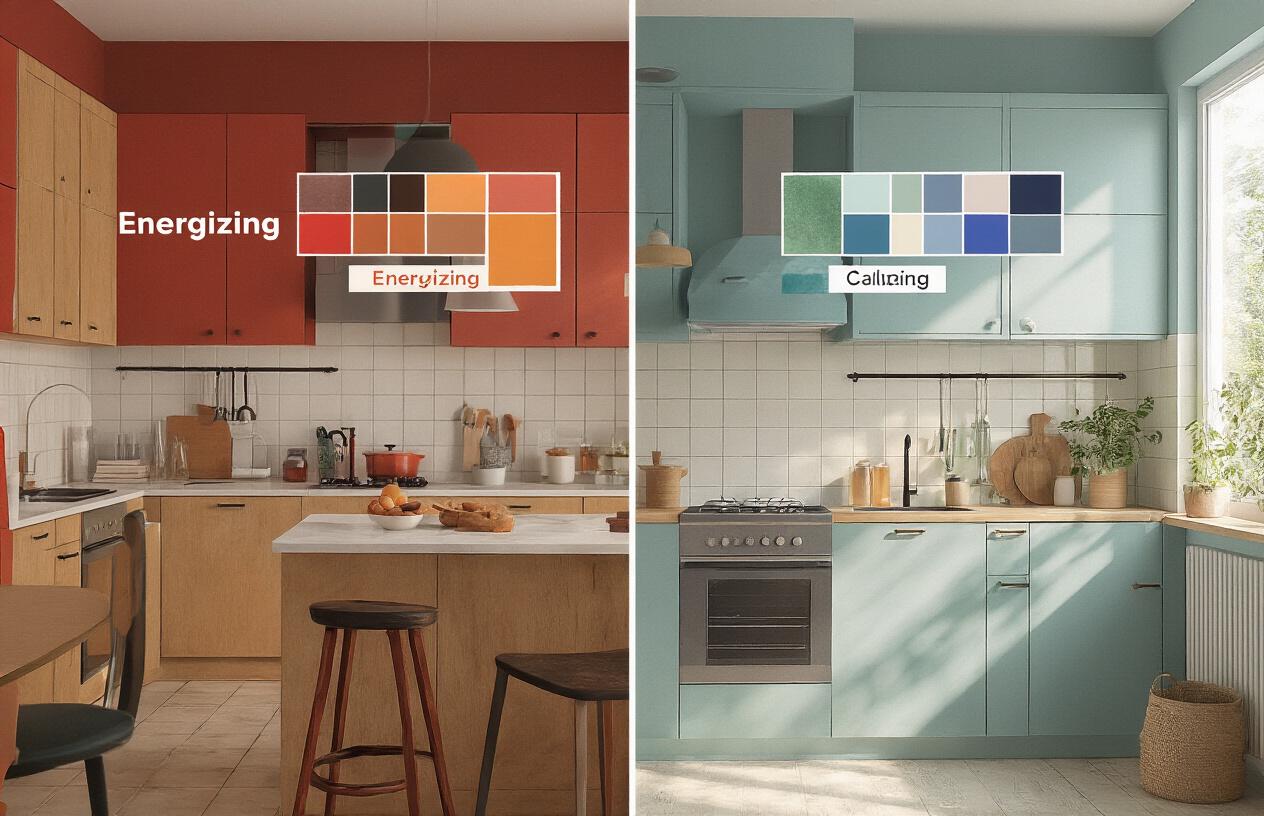
Timeless Neutrals for Long-Term Appeal
Ever walk into a kitchen that just feels… right? That’s the magic of neutrals. White, beige, gray, and black create spaces that don’t shout for attention but whisper sophistication.
White kitchens aren’t going anywhere, and for good reason. They make small spaces feel bigger, reflect natural light, and give you total freedom with accessories. Plus, when you’re ready for a change, you won’t need to overhaul everything.
Greige (that perfect gray-beige blend) works in practically any home style. It’s warm enough to feel cozy but cool enough to look modern. Pair it with wood tones, and you’ve got instant warmth without trying too hard.
Bold Color Choices for Personality-Driven Spaces
Your kitchen should tell your story. Navy blue cabinets? You’re probably confident and appreciate classics with a twist. Emerald green? You’re not afraid to embrace richness and character.
Bold doesn’t have to mean the whole kitchen. A lively island set against neutral cabinetry serves as a focal point while maintaining a sense of balance in the space. Red stimulates appetite (there’s a reason fast-food chains use it), while yellows and oranges bring warmth and energy.
The trick? Balance. One statement color paired with neutrals prevents your kitchen from looking like a rainbow exploded.
Two-Tone Kitchens for Dimensional Interest
The days of matchy-matchy kitchens are behind us. Two-tone kitchens—darker lower cabinets with lighter uppers, or a statement island in a contrasting color—add depth that single-color kitchens just can’t achieve.
This approach is practical too. Darker lower cabinets conceal scuffs caused by shoes and pets, whereas lighter upper cabinets maintain an open atmosphere in the space. The island-in-contrast trick makes it the natural gathering spot.
For maximum impact, try complementary colors (opposite on the color wheel) or keep it subtle with different shades of the same color family.
Personalizing Your Kitchen Remodel
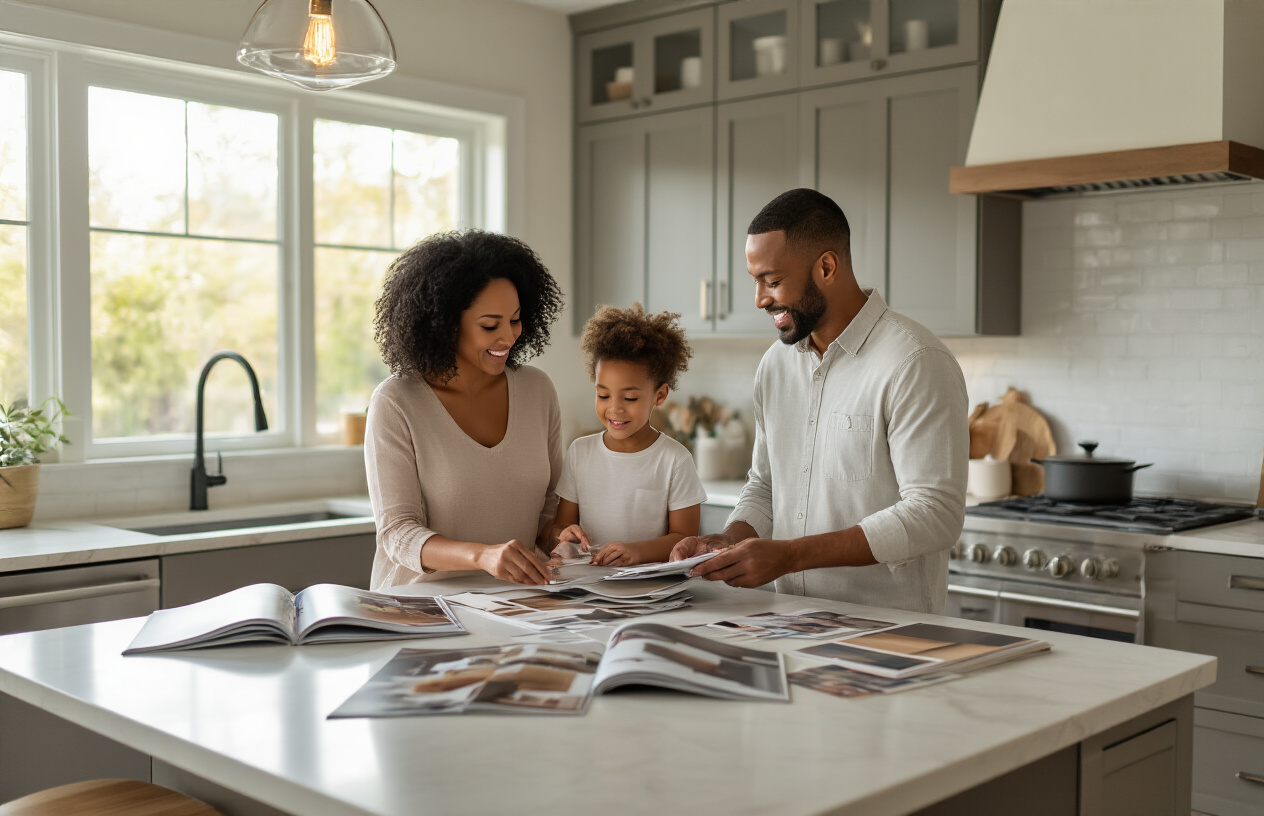
A. Statement Appliances Worth the Investment
Kitchen remodels aren’t just about functionality—they’re your chance to make bold choices. Statement appliances can transform your kitchen from basic to breathtaking in an instant.
High-end refrigerators with custom panels, restaurant-grade ranges, and copper hood vents aren’t just splurges—they’re investments that’ll make you smile every time you walk in. I recently saw a kitchen with a cobalt blue La Cornue range that completely stole the show.
Which statement pieces deliver the biggest bang for your buck?
| Appliance | Impact Level | Longevity |
|---|---|---|
| Professional Range | High | 15-20 years |
| Custom Refrigerator | Medium-High | 10-15 years |
| Colored Hood Vent | High | Lifetime |
| Wine Fridge | Medium | 8-12 years |
Pro tip: Choose one standout piece rather than competing elements. That vintage-inspired SMEG refrigerator in mint green doesn’t need to compete with a bright red range.
B. Hardware Details That Elevate the Look
Kitchen hardware is like jewelry for your space—small touches with massive impact. Swapping out those builder-grade knobs can completely transform your cabinets without breaking the bank.
Brass pulls against navy cabinets? Gorgeous. Matte black hardware on white? Classic and bold.
The secret most designers won’t tell you? Mix your metals strategically. Your faucet no longer needs to coordinate with your cabinet pulls. Consider using brass pulls alongside a matte black faucet to achieve a thoughtfully designed appearance.
Hardware trends worth considering:
- Oversized drawer pulls (8+ inches)
- Leather pulls for a softer touch
- Backplates behind knobs for extra drama
- Hidden integrated handles for a sleek look
C. Incorporating Smart Technology Seamlessly
Smart tech in kitchens shouldn’t scream “I’m a gadget person!” The best tech integrations feel invisible until you need them.
Motion-sensor faucets are game-changers for messy cooking sessions. Under-cabinet lighting with voice control means never fumbling for a switch with flour-covered hands. And refrigerators with internal cameras let you check what you need while grocery shopping.
The trick is finding tech that solves real problems. Do you constantly burn toast? A smart toaster might actually be worth it. Always forgetting to turn off appliances? Smart plugs could save your peace of mind.
My favorite seamless integration? Wireless charging spots built right into countertops. No more counter clutter from charging cables.
D. Adding Personal Touches Without Compromising Resale Value
Your kitchen should tell your story without turning off future buyers. The sweet spot? Personalization that feels special but isn’t permanent.
Instead of wildly colorful cabinets, try:
- Bold accessories you can swap out seasonally
- A stunning art piece that reflects your personality
- Open shelving to display collected pottery or cookbooks
- A dramatic runner rug that can move with you
The key is making permanent elements (cabinets, countertops, backsplashes) relatively neutral, while expressing yourself through elements that can change.
One client incorporated her grandmother’s vintage cake stands into a glass-front cabinet—personal meaning with universal appeal. Another added a custom breakfast nook with a hanging plant system that brought personality without scaring off future buyers.
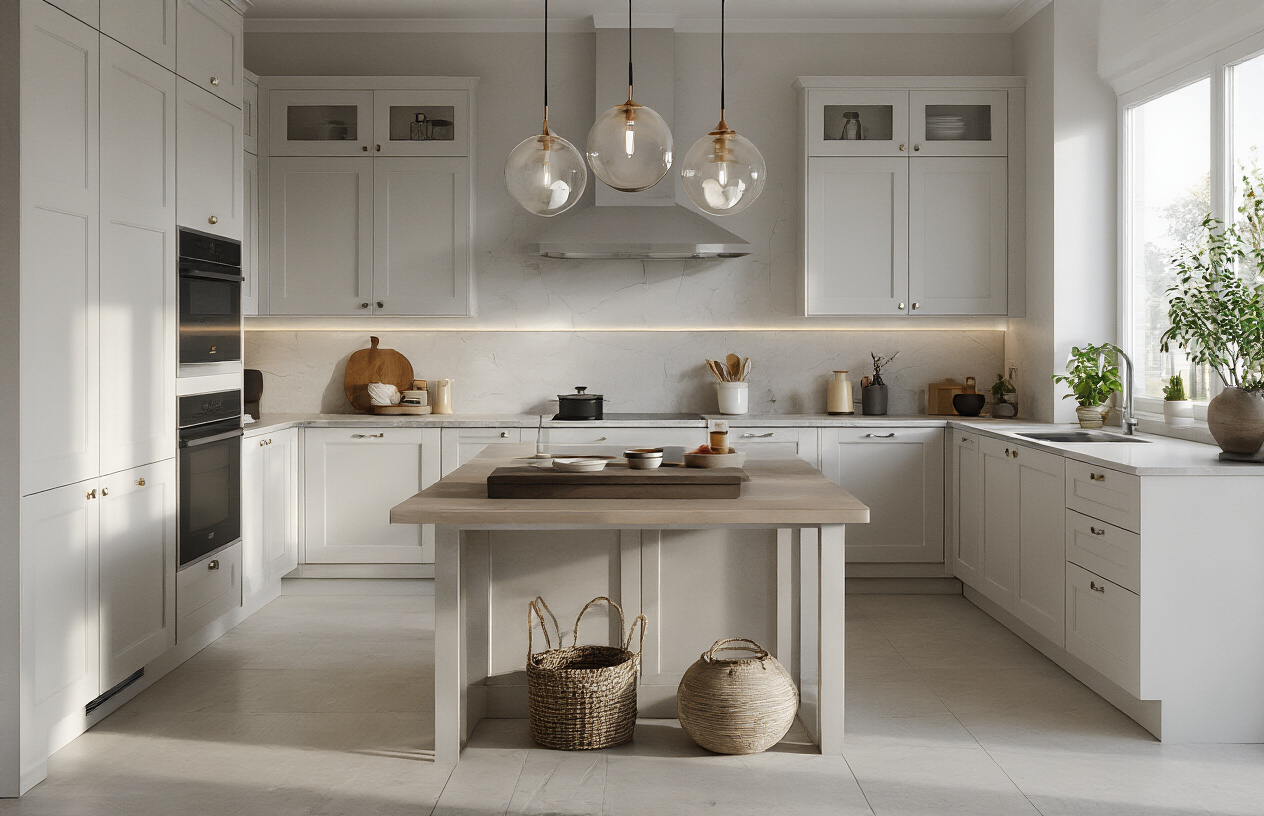
Selecting the appropriate kitchen design not only alters your culinary area but also enhances your overall home experience. From analyzing your specific needs to exploring popular design trends, your kitchen remodel should reflect both functionality and personal taste. The perfect balance of layout optimization, thoughtful color selection, and distinctive stylistic elements creates a kitchen that works efficiently while expressing your unique personality.
Take time to consider how you use your kitchen daily before committing to any design direction. Whether you’re drawn to sleek modern minimalism, classic traditional warmth, or the balanced appeal of transitional styles, the most successful kitchen renovations are those that genuinely enhance your lifestyle. Your kitchen should be a space where form meets function in a way that feels authentically yours—a place where memories are made and everyday moments become special.
Top Kitchen Remodeling Ideas: Which Style Suits Your Home Best?
